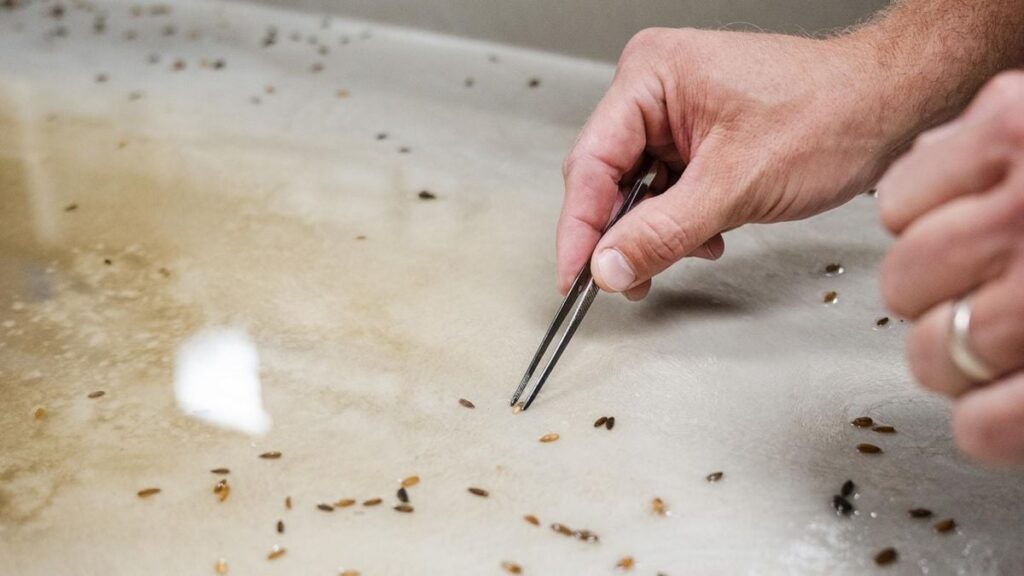Divers recovered rye seeds from the James R. Bentley shipwreck in Lake Huron.
Jonah Brown
On November 12, 1878, the James R. Bentley was sailing across Lake Huron when a fierce storm blew in. The high waves and strong winds were no match for the three-masted wooden schooner, which sank to the bottom of the lake near the tip of northern Michigan. A nearby ship rescued the crew, but the cargo—36,000 bushels of rye—was lost.
Now, after spending the past 146 years submerged in Lake Huron’s chilly waters, some of that rye may be getting a second life. A team of Michigan-based scientists, distillers and divers is trying to resurrect the long-submerged grains in hopes of one day turning them into whiskey.
Discovered in 1984 near Cheboygan, Michigan, the James R. Bentley is one of the few privately owned shipwrecks in Michigan, according to MLive.com’s Justine Lofton. All others are protected by a state law that prohibits divers from removing, altering or destroying artifacts.
The 170-foot-long vessel, submerged 165 feet deep, belongs to shipwreck enthusiast Paul Ehorn. He agreed to let Chad Munger, the founder of Michigan’s Mammoth Distilling, organize an expedition to retrieve rye seeds from the wreckage.
In mid-September, a team sailed across Lake Huron, dove to the shipwreck and filled several large tubes with 19th-century rye seeds.
“I could see blond grain,” diver Dusty Klifman tells the New York Times’ Cara Giaimo. “I thought, holy cow, this stuff is still good.”
Once the divers resurfaced, they put the seeds on ice and drove them to a laboratory at Michigan State University. Many of the seeds were black, mushy and smelly, but some appeared to be healthy.
Eric Olson, a Michigan State University botanist who specializes in wheat breeding and genetics, began experimenting to see if he could get the seeds to germinate. He put some in cold storage and submerged others in a hormone solution, per the Times. He also tried drying some out. Unfortunately, despite all of these efforts, none of the seeds sprouted into plants.
But Olson wasn’t deterred. He extracted DNA from the seeds, which he will use to determine the rye’s variety and origins. Moving forward, Olson also hopes to use gene-editing techniques to introduce some of the DNA into a modern rye variety. That genetically modified grain could one day be distilled into whiskey.
“It’s the first time that someone’s tried to resurrect a rye variety from a shipwreck, right?” Olson tells Fox 17’s Andy Curtis. “This … is a unique and novel endeavor.”
On a longer timeline, Munger hopes the project will lead to a resurgence of rye agriculture in Michigan, which was historically a major rye-producing state. He also wants to help develop a Michigan Rye Trail, a tourism initiative that would link farms and distillers across the state—similar to the Kentucky Bourbon Trail.
“We want to see Michigan recreate the economy it had built purposefully around growing rye 120 years ago,” says Munger in a statement.


